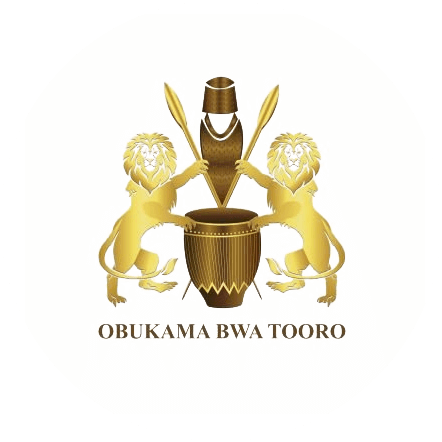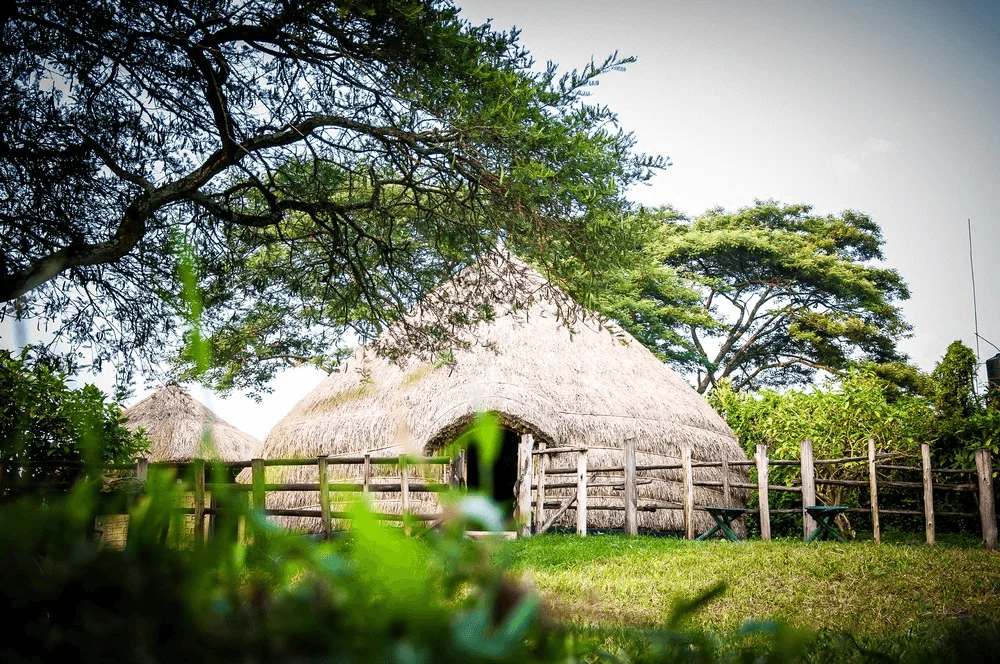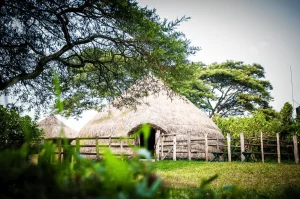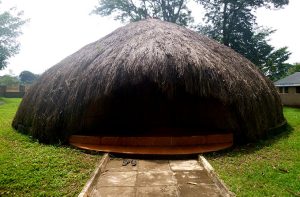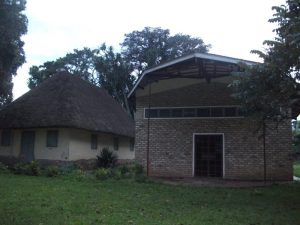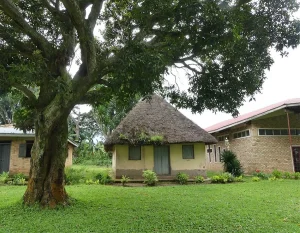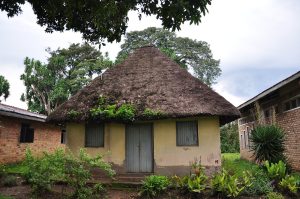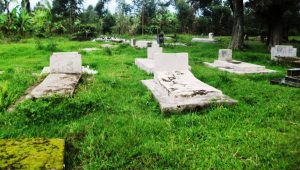The Karambi Royal Tombs, located approximately 4 kilometers south of Fort Portal along the Fort Portal–Kasese highway, serve as the final resting place for several of Tooro Kingdom’s revered monarchs and royal family members. This sacred site is not only a burial ground but also a repository of the kingdom’s rich history and cultural heritage.
Among the prominent figures interred here are Omukama Daudi Kasagama Kyebambe IV, who reigned from 1891 to 1928 and played a pivotal role in formalizing the kingdom’s structures; Omukama George Kamurasi Rukidi III, who led from 1928 to 1965 and was known for his efforts in modernizing the kingdom; and Omukama Patrick David Matthew Kaboyo Olimi III, who reigned from 1965 until his death in 1995 and was instrumental in reviving the monarchy after its abolition.
The tombs are housed within modest structures that reflect traditional Tooro architectural styles. Inside, visitors can find royal regalia such as spears, drums, stools, and other artifacts that were significant during the reigns of the buried kings. These items offer a tangible connection to the past and provide insight into the ceremonial aspects of Tooro’s monarchy.
Beyond the tombs of the kings, the site also includes graves of other royal family members, including princes and princesses, emphasizing the importance of lineage and heritage in Tooro culture. The Karambi Royal Tombs thus stand as a testament to the kingdom’s enduring traditions and the reverence held for its leaders.
Recognizing the cultural and historical significance of the Karambi Royal Tombs, the Tooro Kingdom has expressed intentions to renovate and preserve the site. Plans have been discussed to enhance the tombs’ infrastructure, potentially including the establishment of a museum to educate visitors about the kingdom’s history and traditions. Such efforts aim to promote cultural tourism and ensure that future generations can appreciate and learn from this vital heritage site.
Visitors to the Karambi Royal Tombs are encouraged to approach the site with respect and reverence, acknowledging its significance as a sacred space. Engaging with local guides can enrich the experience, providing deeper understanding of the customs, stories, and historical contexts associated with the tombs and the Tooro Kingdom at large.
